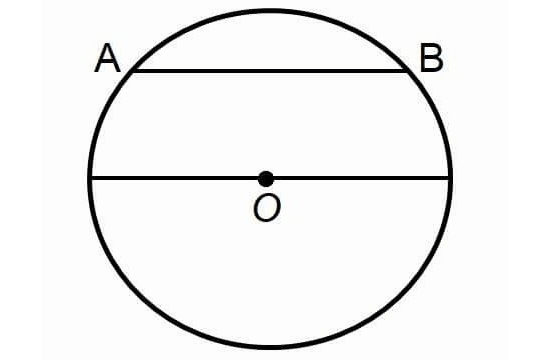PLOT THE GIVEN POLAR COORDINATE POINT IN THE POLAR COORDINATE SYSTEM
Polar Coordinate System :
A polar coordinate system is a plane with a point O, the pole and ray from O the polar axis.
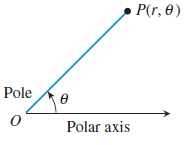
Each point P in the plane is assigned to polar coordinates
r is the directed distance from O to P and θ is the directed angle whose initial side is on the polar axis and whose terminal side is on the line OP.
As in trigonometry, we measure θ as positive when moving anticlockwise and negative when moving clockwise.
If r > 0, then P is on the terminal side of θ. If r < 0 then P is on the terminal side of π + θ.
Example 1 :
Plot the points with the given polar coordinates.
(a) P(2, 2π/3) (b) Q(-1, 3π/4) (c) R(3, -450)
Solution :
The given points has to be considered as (r, θ)
(a) P(2, 2π/3)
Here r = 2 > 0 and θ = 2π/3 (positive), so the terminal side is on P.
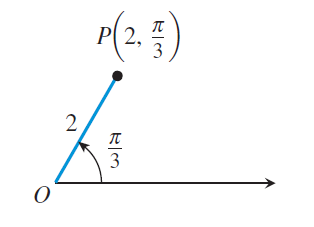
(b) Q(-1, 3π/4)
Here r = -1 < 0 and θ = 3π/4 (positive), so the point Q on the terminal side π + θ.
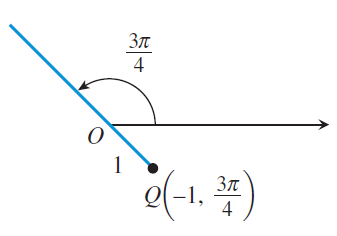
(c) R(3, -450)
Here r = 3 > 0 and θ = -450 (negative), to get the terminal side we should have a anti clock wise rotation.
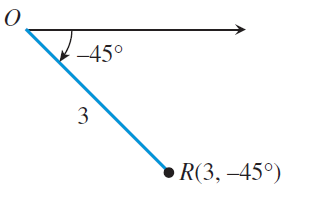
Note :
Each polar coordinates pair determines a unique point. However the polar coordinates of a point P in the plane are not unique.
Find all Polar Coordinates of a Point
Let P have polar coordinates (r, θ). Any other polar coordinate of P must be in the following form.
(r, θ + 2nπ) or (-r, θ + (2n + 1)π)
Where n is any integer. In particular, the pole has polar coordinates (0, θ), where θ is any angle.
Example :
Polar coordinates of P are given. Find all of its polar coordinates.
(i) P(2, π/6)
(ii) P(2, -π/4)
Solution :
(i) P(2, π/6)
Here r = 2 > 0 and θ = π/6
(r, θ + 2nπ) or (-r, θ + (2n + 1)π)
(2, π/6 + 2nπ) or (-2, π/6 + (2n + 1)π)
Where n is an integer.
(ii) P(2, -π/4)
Here r = 2 > 0 and θ = -π/4
(r, θ + 2nπ) or (-r, θ + (2n + 1)π)
(2, -π/4 + 2nπ) or (-2, -π/4 + (2n + 1)π)
Where n is an integer.
Kindly mail your feedback to v4formath@gmail.com
We always appreciate your feedback.
©All rights reserved. onlinemath4all.com
Recent Articles
-
Digital SAT Math Problems and Solutions (Part - 194)
Jun 27, 25 01:22 AM
Digital SAT Math Problems and Solutions (Part - 194) -
Digital SAT Math Problems and Solutions (Part - 193)
Jun 25, 25 01:48 AM
Digital SAT Math Problems and Solutions (Part - 193) -
Digital SAT Math Problems and Solutions (Part - 192)
Jun 24, 25 10:09 AM
Digital SAT Math Problems and Solutions (Part - 192)
